While we’re having a great time in Costa Rica, let us take a quick step back to Nicaragua for a minute. In particular, I’d like to consider Nicaraguan food. After conducting a family poll, I have found that the island of Ometepe is the dining sweet spot for most of our family in this Central American nation. Three of the five of us indicated our favorite meals and our favorite thing to eat in general came from Ometepe.
In fact, Zoe, Lanie, Nadia and I all picked our dinners from the same restaurant as our favorites, even though we all ordered different meals. This restaurant was the unassuming La Galeria on the main street of Moyogalpa, where we ate on our last night before heading for the border. It was actually our second-choice dinner spot for the night — we were all set for the pizza place across the street from our hostel, but for some reason the pizzas were backlogged and we were facing an hour-long wait before getting our food. It was all to our benefit, as Lanie ended up loving her pasta marinara and Zoe rated very highly the two plates she shared with Nadia — four cheese pasta and terryaki chicken.
The Galeria’s menu was flexible enough to allow me to continue my pursuit of the traditional Nico dish, chicken with jalapeno sauce. Typically, I don’t go out of my way to eat spicy things, but this one caught my eye at the Nicaraguita restaurant in Leon and I ordered it a couple of times after that. It consists of a grilled piece of chicken smothered in onions and jalapino slices and a light cream sauce. It is usally accompanied by rice, slaw and plantains. The plates varied slightly every time I ordere it. At the Nicaraguita, the onions and peppers were uncooked, giving a nice crunch and a fresh flavor. On the pedestrian promenade in Granada they were pretty well sauteed, adding extra sweetness to the cream sauce. At the Galeria, the vegetables were lightly sauteed giving a little crunch and a little sweetness, but I have to admit, I liked this restaurant’s version the best because it was the biggest. It featured a really nice piece of chicken. Nadia felt the same way about her liberally seasoned terryaki chicken. There was a lot of food that night and no leftovers.
I should add that I liked eating chicken in Nicaragua because they know how to treat their chickens there. That is to say they let their hens, chicks and roosters walk around freely, scratching away in the leaves and twigs. These are happy chickens.
Jen has trouble deciding, but when pressed, she votes for the breakfasts at Finca Lindos Ojos in La Miraflor. The pancakes were excellent and the coffee was welcome in the chilly mountain air, but the steamed milk, fresh from the early-morning milking of finca’s cows, is what put these breakfasts over the top for Jen. She also says nice things about the Gallo Pinto and eggs put out by Marcial’s wife, the Lindos Ojos cook (she was also the bookkeeper). Remember, too, that the coffee itself was harvested at the finca, and we could see the bushes growing from where we ate our breakfasts.
Other meals mentioned during my poll were: the macaroni casserole on our first night at the Finca Lindos Ojos, all the fresh fruit that accompanies everything, the waffles at the Rancho Esperanza, the Japanese curry at the Rancho Esperanza, the banana pancakes at the Cafe Imperio in Meridia on Ometepe, and the club sandwich at the Casa Veccio in Esteli.
I know. You’re thinking: Pizza? Pancakes? Club sandwiches? They’re not in Central America, they’re at an Applebee’s in Central Florida. One look at that list confirms that not everyone got into the spirit of eating Nico food. We visited a lot of Italian restaurants and pizza places.
Besides my beloved chicken with jalapenos and a nod by Jen to the Gallo Pinto at the finca, the only other local dish to make our most-remembered list was the family plate at the swimming pool restaurant on our first night in Nicaragua.
Perhaps this can be expected after two weeks of pristinely healthy food at the Mariposa School. I myself admit to being excited upon walking into the Hollywood Pizza in Leon and encountering a few pies, some beer and pitcher of orange soda. Oh, and breadsticks, too. I’m surprised that place didn’t make the list.
The food at the Mariposa should not be discounted, though. It was all grown locally and prepared well. It was mostly vegetarian and the fresh vegetables shone. Even Jen was eating beets there. The beets were so sweet! (Also, they were omni-present, so they might have just worn Jen down.) I have often heard of people going on purges at home, cutting out sugar, alcohol, caffeine, salt and/or processed foods. Eating at the Mariposa was like that for us (except for the caffeine and alcohol, of which Jen and I partook, but only moderately). We were served very little wheat or dairy. The mere absence of cheese help my waistline immensely. There were deserts, but they weren’t over-the-top with sweetness. It was a very easy way to accumulate two weeks of healthy eating.
One more thing before we move on to desserts. Beans and rice are very popular here — particularly for breakfast, but some people eat it for every meal. Our farm guide Marcial claimed to eat it exclusively. He never ate any fruit, he said, even though all around him trees were bursting with mangoes, bananas and papayas. I tried to eat Gallo Pinto very chance I got, and I have concluded that, while the dish is fairly standard and straightforward, my favorite version was served at the Cafe Luz in Esteli because it had more onions and peppers mixed in with the beans and rice. Marcial may not have liked it, but I did.
The only other Nico dish that I can remember trying was a Nacatamale, which I also tried at Cafe Luz. It was cornmeal cooked in a banana leaf with some pork thrown in. It was good. It maybe picked up a little banana flavor from the leaves. I did not feel the need to order it again, though.
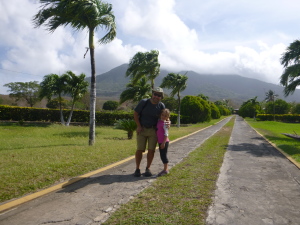
We had to eat so fast we didn’t get a picture of the milk shakes. It was not far from this spot that we got them, though.
Ok, on to dessert, which is what gets represented when you ask my family what their favorite things to eat are and you don’t pin them down to an actual meal. Three of us still remember most fondly the banana coconut milk shakes we shared at the end of our waterfall hike in Ometepe. The idea of the milkshakes may have been as a bribe to keep everyone moving on the path. In reality, they were expensive, but huge and very good. Sweet, rich and refreshing after an eight-kilometer hike. (We have all decided that the last kilometer of the reportedly six-kilometer hike had another kilometer hidden in it.) I was not going to have any milkshake, but it was clear that as hungry as everyone was, they were going to have trouble getting through them. Also, our bus driver was waiting to bring us home. They were less milkshake and more of a consistency of a Blizzard at Dairy Queen or a Friendz at Friendly’s, and they were a perfect combo of big size and great taste. Using fresh ingredients surely helped.
Other dessert highlights mentioned: gelato in Leon, mango and chocolate ice creams at the Laguna de Apollo, and the banana cream pie at the Mariposa School.
Lastly, while we’re still in Nicaragua, I should recount a story that I’m surprised Jen left out of her account of our Volcan Maderas hike. While we were at the summit, peering into the crater, we spied the Shaman of the Volcano. Our guide said the Shaman, whose name is Tom, only appears on very clear days. If you see him, you can ask one question and he’ll answer it.
We approached the friendly looking man. His twinkling eyes beheld us from between his bushy beard and his Red Sox cap pulled low. Before we could even get a question out, he answered in slightly Manchester-accented English (that’s Manchester, NH): “You had 16 pounds of laundry in Granada.”
It was not exactly the answer to life, the Universe and everything, but it at least was pretty accurate. The truth is that we had 17 pounds of laundry in Granada. There may have been a wet bathing suit in there or something. It cost close to $20 to get it washed, dried and folded, but it was worth it.
That, friends, is why you should all hike up volcanoes when you get the chance. At least on clear days.
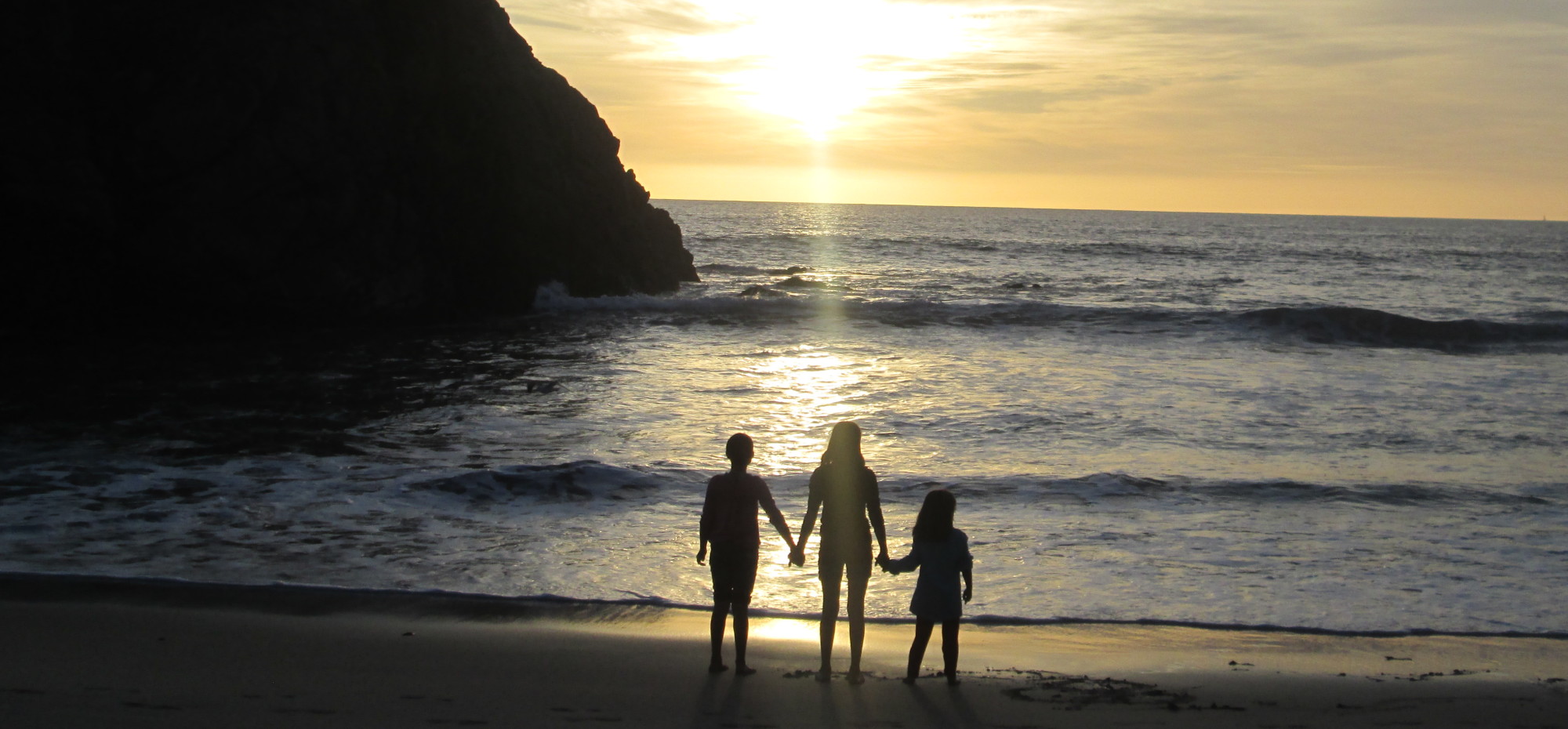
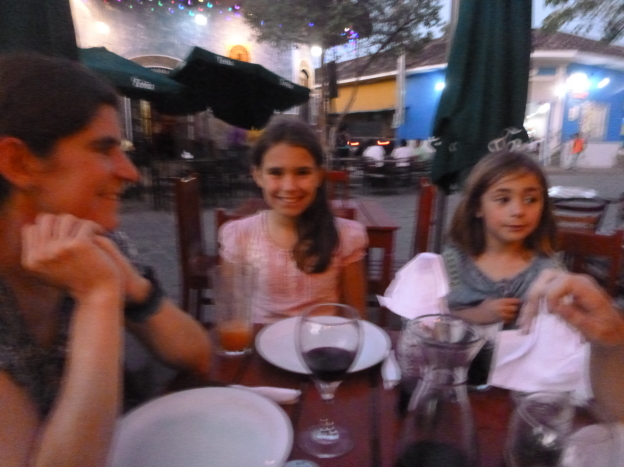
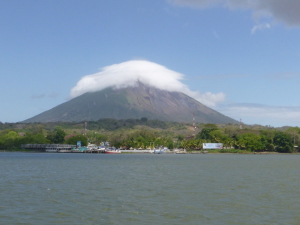
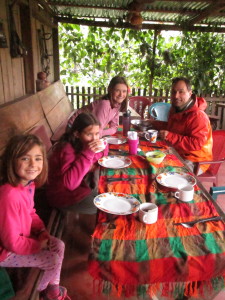
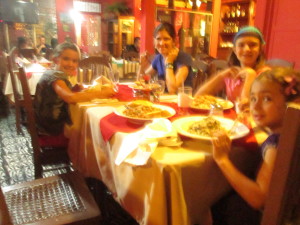
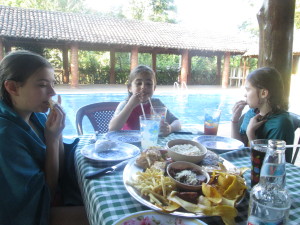
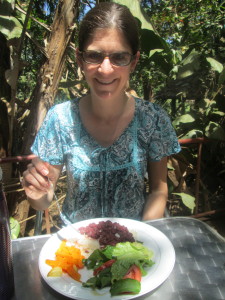
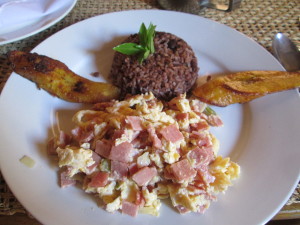
You all have certainly broadened your culinary experiences.